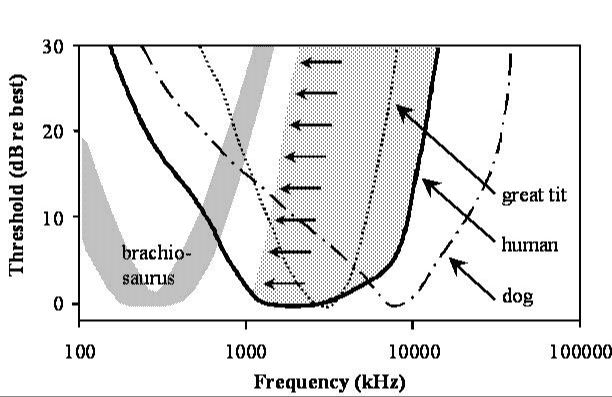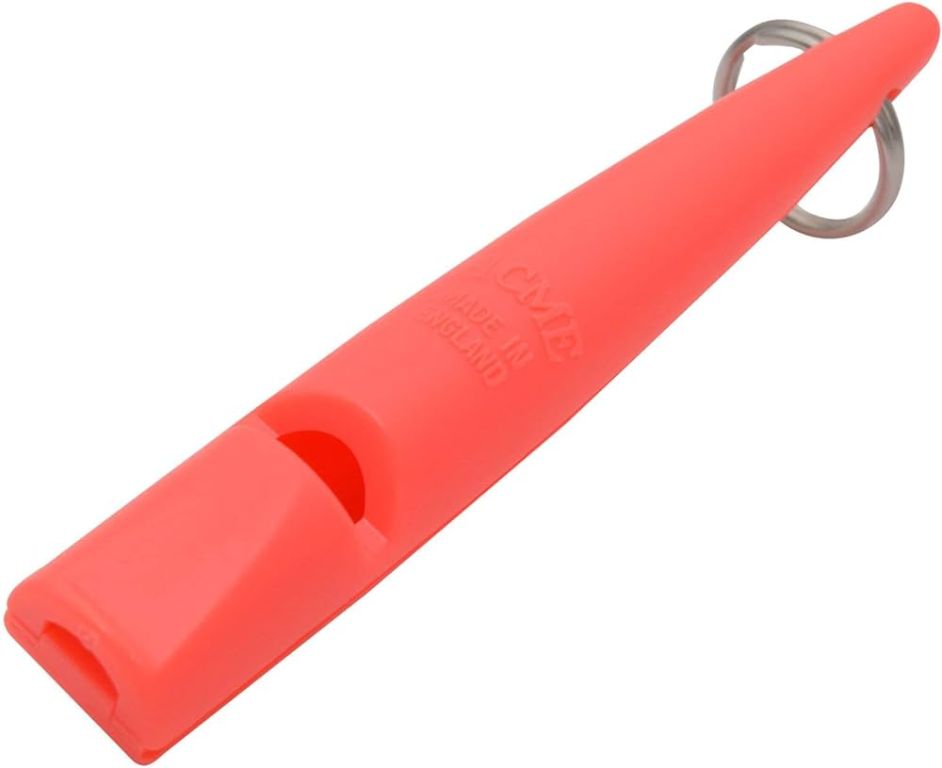Introduction
Dog whistles are training tools used to get a dog’s attention over long distances or in noisy environments. They emit high frequency sounds, outside the range of human hearing, to signal dogs without disturbing people. Some dog whistles produce only ultrasonic frequencies audible only to canines, while others have harmonics in the range of human hearing. Dog whistles allow trainers to reinforce behaviors from a distance, capturing a dog’s attention even when distracted.
How Dog Whistles Work
Dog whistles produce high frequency sounds that dogs can hear but humans can’t. This is due to differences in hearing range between the two species. Humans can detect sounds up to around 20,000 Hz, while dogs can hear sounds up to 45,000 Hz or more (https://www.quora.com/Can-human-ears-hear-all-the-frequencies-created-by-a-dog-whistle).
A dog whistle generates a very high pitched tone typically between 23,000 Hz and 54,000 Hz (https://en.wikipedia.org/wiki/Dog_whistle). This allows the whistles to produce sounds at frequencies above the normal hearing range for humans. When blown, the whistle creates ultrasonic sound waves that are interpreted by a dog’s ears and brain, but are undetected by humans.
The reason dogs can hear these higher frequency sounds is due to their evolved sensory perception. A dog’s hearing range evolved to detect higher pitched noises that aid in hunting and communication. The structure and function of canine ears is specialized to pick up a wider range of frequencies beyond human capability.

So in summary, dog whistles exploit the upper hearing range in canines, generating sounds at frequencies too high for humans to hear but perfectly audible to dogs. This allows the whistles to produce signals meant for canine ears only.
History of Dog Whistles
The first silent dog whistle was invented in 1876 by Francis Galton, a scientist who was Charles Darwin’s half-cousin [1]. Galton invented the “Galton’s whistle” which produced very high-frequency sounds that are inaudible to most humans but can be heard by animals like dogs. He created the whistle in order to test high frequency hearing in humans and animals.
This early version of the silent dog whistle was mentioned in Galton’s book Inquiries into Human Faculty and Its Development published in 1883. The book documented his research into things like hereditary intelligence and sensory abilities in humans versus animals [2]. His whistle allowed Galton to conduct new experiments comparing the auditory range between species.
Though originally designed for research purposes, people soon realized the whistle’s potential for dog training. By the early 1900s, silent dog whistles were being manufactured and marketed specifically for dog owners and trainers. Since then, various types of silent whistles have been developed and continue to be used in obedience training and handling of dogs.

Training Uses
Dog whistles are commonly used as a training tool for dogs. The high-pitched sound grabs the dog’s attention and allows the trainer to give commands and reinforce behaviors from a distance. Some of the main training uses for dog whistles include:
- Getting a dog’s attention – A quick, sharp blast from the whistle will get most dogs to stop what they are doing and look to you.
- Recall training – Teaching your dog to come to you when called. Use the whistle sound, followed by a “come” command and reward with a treat when they return.
- Distance work – For more advanced training like agility, hunting dogs, or obedience trials, whistles allow handlers to cue behaviors from across a field or arena.
- Stopping unwanted behaviors – Blowing the whistle can disrupt barking, jumping up, or other unwanted behaviors. Then you redirect to a command or more desired behavior.
- Marking behaviors – Whistles are used to “mark” and reward desired actions. For example, blow the whistle the moment your dog sits, then reward with praise or a treat.
The whistle’s sharp tone combined with consistent training allows dogs to be conditioned to respond reliably to the sound in different contexts. With proper use, dog whistles are extremely effective training aids even from long distances.
Types of Silent Dog Whistles
There are a few main types of dog whistles that emit sounds at frequencies too high for humans to hear but audible to dogs:
Galton Whistle – The Galton whistle, named after Sir Francis Galton who invented it, emits a high frequency tone that is undetectable by most humans. It utilizes an enclosed airflow design to produce ultrasonic frequencies up to 20,000 Hz.
Acme Whistle – The Acme silent dog whistle is considered one of the best whistles for training dogs. Its innovative pea-less design generates consistent, penetrating ultrasonic frequencies from 18,000 to 22,000 Hz.
Ultrasonic Whistles – These electronic whistles create very high frequency tones using piezoelectric emitters. They allow adjusting the frequency and volume for customized training. Ultrasonic models can reach up to 50,000 Hz.
The key benefit of silent dog whistles is the ability to give cues that dogs hear clearly but are inaudible to humans. This prevents confusing multiple dogs being trained in the same area. It also allows communicating with dogs without disturbing people nearby.
Galton Whistle
The Galton whistle, invented in 1876 by Francis Galton, was one of the first devices designed to produce a high-frequency tone that only dogs could hear [1]. Galton, a British scientist known for his pioneering work in meteorology and statistics, was interested in studying the limits of human hearing [2]. Through his research on humans, he realized that high frequency sounds were inaudible to people but could likely be heard by some animals.

The Galton whistle consists of a small blow whistle attached to an adjustable piston housed inside a tube [3]. By sliding the piston up and down, the air gap inside the whistle can be adjusted. This changes the resonant frequency produced when blowing into the whistle. At its lowest piston setting, the Galton whistle creates an audible high-pitched tone to humans of about 5 kHz. As the piston is increased, the frequency also increases. At the highest piston settings, the whistle emits ultrasounds at frequencies over 22 kHz, which are only detectible by dogs and other animals.
The adjustable nature of the Galton whistle allowed it to produce tones ranging from audible to exclusively ultrasonic. This made the whistle ideal for Galton’s studies on the hearing ranges of various animals. While humans cannot hear the higher ultrasonic frequencies, dogs and other canines are able to detect sounds up to 45 kHz. The Galton whistle takes advantage of this, creating a unique “dog whistle” that provides a simple way to emit signals inaudible to humans but noticed by canines.
Acme Whistle

The Acme Whistle number 535 dog whistle (source) is one of the most popular silent dog whistles on the market. Manufactured by ACME whistles since 1876, this whistle produces an ultrasonic sound at 23000 Hz that is barely audible to humans, but captures the attention of most dogs (source).
The Acme Whistle produces a consistent, high frequency tone in all weather conditions thanks to its pea-less whistle design. It has an ergonomic grip and lanyard hole for easy handling. The whistle is made from high impact ABS plastic and is available in various colors. It requires minimal air flow to produce a shrill tone, making it easy to use for extended training sessions (source).
Many professional dog trainers rely on the Acme Whistle because of its reliability, versatility and effectiveness for obedience training across various breeds. The whistle’s ultrasonic frequency allows trainers to give commands over significant distances that dogs respond to, but humans barely detect. This helps reinforce behaviors during distraction training. The Acme whistle is a top choice for reliable, consistent performance.
Ultrasonic Whistles
Ultrasonic whistles are a newer type of silent dog whistle that utilize high frequency sounds. These electronic whistles emit tones at frequencies higher than the range of human hearing, but dogs can detect sounds up to 45 kHz. So ultrasonic whistles produce extremely high-pitched sounds that are inaudible to humans.
Most ultrasonic whistles operate at a frequency between 23 kHz to 54 kHz. Popular models include the Acme Silent Dog Whistle 210 and Acme 535 Ultrasonic which have adjustable frequency dials. These allow you to change the pitch to find the right frequency for your dog.
Benefits of ultrasonic whistles include very precise frequency control, generally louder volumes than traditional whistles, and the ability to change frequencies as needed for training. They allow silent yet effective communication over longer distances. Modern electronic dog whistles are extremely durable as well.
Ultrasonic whistles are a great option if you need a versatile and highly customizable silent training tool. With no audible sound to humans, ultrasonic dog whistles prevent disruption in populated areas.
Choosing the Right Whistle
Choosing the right silent dog whistle for your needs is important for effective training. Here are some tips:
Consider the whistle’s frequency – Ultrasonic whistles that operate at 15-22 kHz are ideal for most breeds. Higher frequencies up to 50 kHz work well for breeds with excellent hearing like German Shepherds.
Look at the whistle’s range – A good whistle should be audible to dogs up to 400-500 yards away to maintain control even at a distance.
Choose a durable whistle – Metal whistles like the Acme 535 are more durable than plastic models.
Get an adjustable whistle – Whistles with adjustable frequency allow you to find the perfect pitch for your dog’s hearing.
Test different whistles – Every dog’s hearing is slightly different, so test a few whistles to find one your dog consistently responds to.
Consider versatility – Many silent whistles can be used for obedience training, recall, and stopping barking. Choose a versatile whistle if you have multiple training goals.
By keeping these tips in mind and testing a few top-rated whistles, you can find the perfect silent dog whistle to enhance your training.
Conclusion
In summary, silent dog whistles utilize high frequency sounds that are inaudible to humans but can be heard by dogs. They have been used for over a century to train and command dogs at a distance without distracting humans nearby. The original Galton whistle paved the way for more advanced ultrasonic models that are adjustable, durable and consistent in tone.
When choosing a silent dog whistle, key factors include the frequency range, durability, consistency and ease of use. Models like the Acme or ultasonic whistles tend to be more reliable and adjustable than a basic Galton. With training, silent whistles allow owners to reinforce commands and behaviors in their dogs, without the need for verbal cues. Used properly, they are an invaluable tool for any dog owner.
The unique ability of dogs to hear these high pitches allows for more effective remote communication. As the technology and design improves, silent dog whistles will continue to benefit dog training and ownership. Their quiet, consistent tones make them the ideal way to command canines while maintaining peace and quiet for surrounding humans.